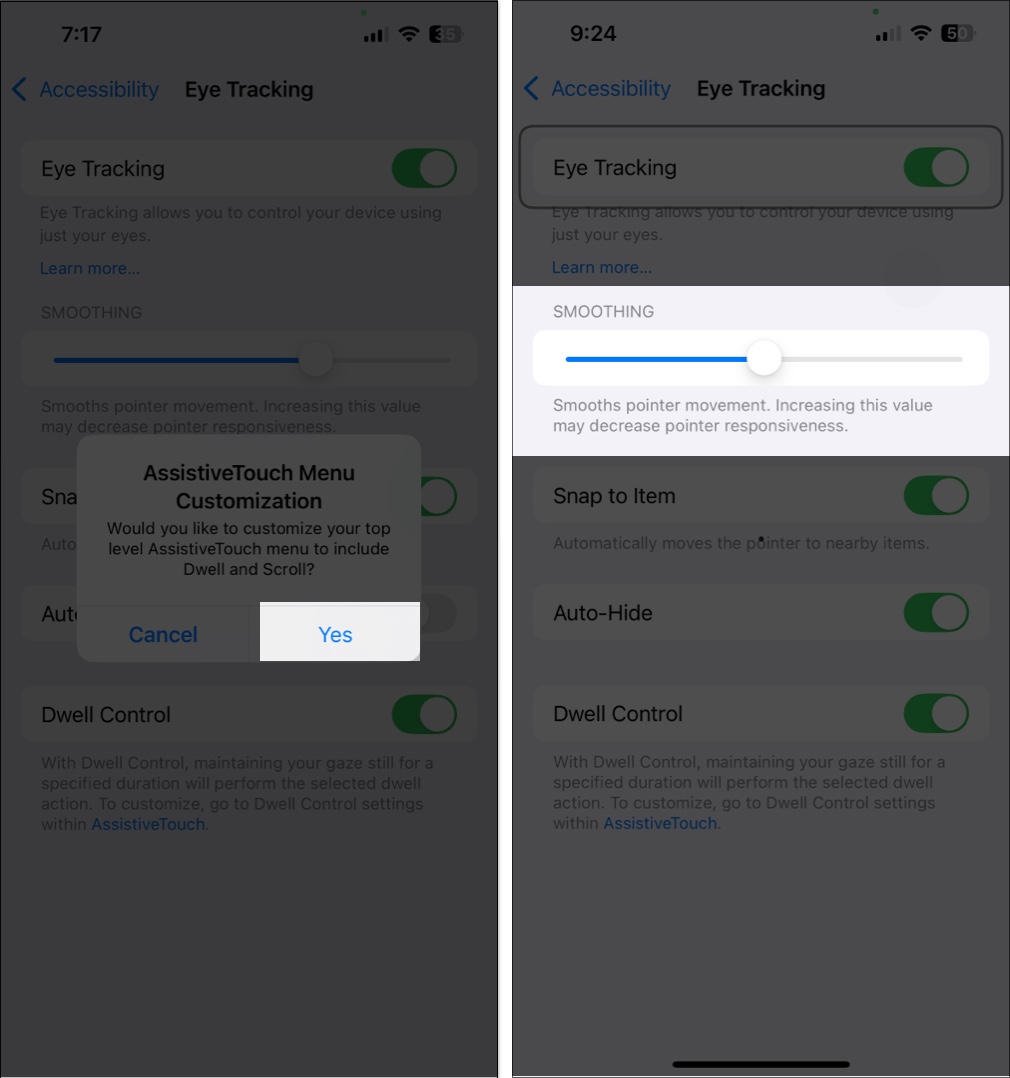iOS 18 and iPadOS 18 pack several new features, including Apple Intelligence. However, besides these headlining features, these new software releases offer many new accessibility features to make iPhones and iPads more usable.

One such feature, Eye Tracking, can truly transform how people with motor disabilities, or anyone, interact with devices. Eye Tracking lets you use your eyes to perform various actions without touching the screen, such as launching apps, scrolling through social media, taking screenshots, locking your device, etc.
This guide can help you try this unique accessibility feature on your iPhone or iPad. Keep reading as we show you how to turn on and use Eye Tracking on your iPhone or iPad in iOS 18 and iPadOS 18.
Which iPhones and iPads support Eye Tracking?
Eye Tracking is available on almost all iPhones and iPads that support Face ID. In the case of iPhones, this includes all devices with Apple’s A12 Bionic chipset or higher except iPhone SE. Meanwhile, in the case of iPads, this includes all iPad Pro models released after 2018.
How to turn on iOS 18 Eye Tracking on your iPhone
Setting up Eye Tracking on an iPhone and iPad only takes about a minute. To do so, you must enable the feature on your device and complete the calibration process. Here’s how it works:
- Open the Settings app on your iPhone or iPad.
- Navigate to Accessibility and tap on Eye Tracking.
- Place your device 1.5 feet (45 cm) away from your face.
- Toggle on Eye Tracking to initiate the calibration process.
- Stare at the ten coloring dots as they appear around the screen.
- If an AssistiveTouch Menu Customization dialog pops up, tap Yes.
- Use the Smoothing slider to reduce the cursor’s jittery movements.
Turning on Eye Tracking on your iPhone or iPad will also enable Dwell Control. As you’ll learn in the next section, this is another accessibility feature, and it’s used by Eye Tracking to help you perform various actions without using physical touch.
How to use iPhone Eye Tracking in iOS 18
Once you turn on Eye Tracking, a cursor that looks like a grey dot will appear on your screen. You can look at the screen to move the cursor with your eyes and select options using Dwell Control. With Dwell Control, once the cursor is placed on the correct option, you just have to dwell or stare at it for a certain period, and you’ll be able to open menus and toggle features on or off this way.
When you want to perform advanced actions on your device, you can use Eye Tracking in tandem with AssistiveTouch. With this feature, you can quickly open a context menu to access options to lock the device, open the Notifications Centre or Control Centre, take screenshots, scroll, and more.
If you ever need to modify the time it takes to trigger an action using Dwell Control, you can do so using the Seconds option under Settings → Accessibility → AssistiveTouch → Dwell Control. You can also modify the AssistiveTouch menu to add more actions or remove existing ones from the Customize Top Level Menu option located on the same page.
Video: How to control your iPhone with iOS 18 Eye Tracking feature
Signing off…
Eye Tracking is a great accessibility feature that extends the possibilities of using an iPhone or iPad. This opens up the Apple ecosystem to users who previously couldn’t due to a touch-first interface. Nevertheless, as of now, the feature still needs a little more polishing before it can work as Apple intended it to.
If Eye Tracking is not working on your iPhone or iPad, you should first ensure that the TrueDepth camera used for Face ID is clean and not blocked by a case. If that doesn’t help, you can restart your device or recalibrate Eye Tracking by turning the feature off and then setting it up again.
Eye Tracking is not supported on Macs in macOS Sequoia. However, if you want a similar feature on your Mac, you can go to System Settings > Accessibility > Pointer Control and turn on Head Control. This feature lets you move the mouse pointer with the movement of your head and perform actions like double-click, right-click, or left-click using your facial expressions.
Also Read:

